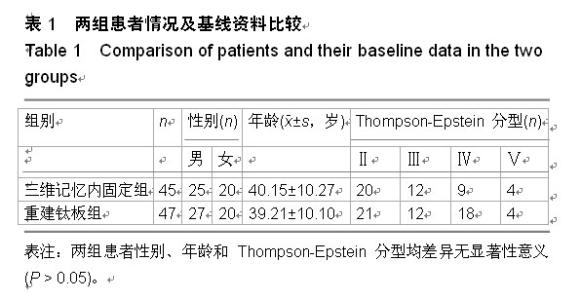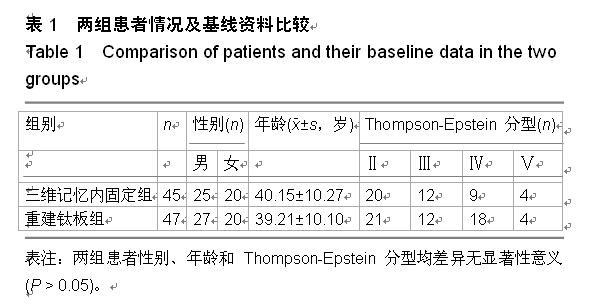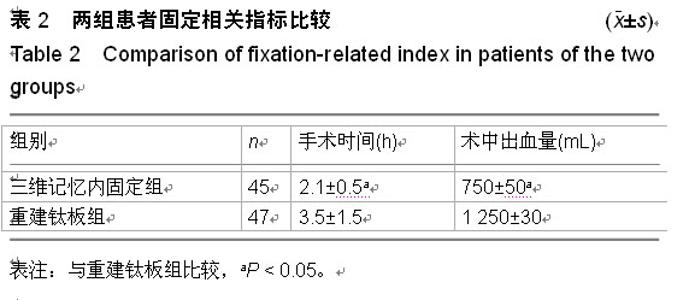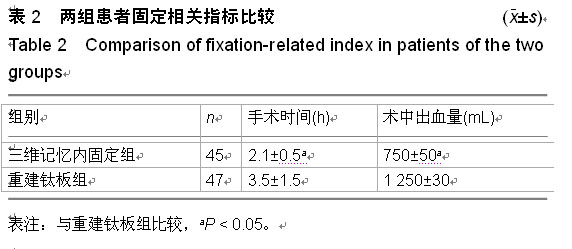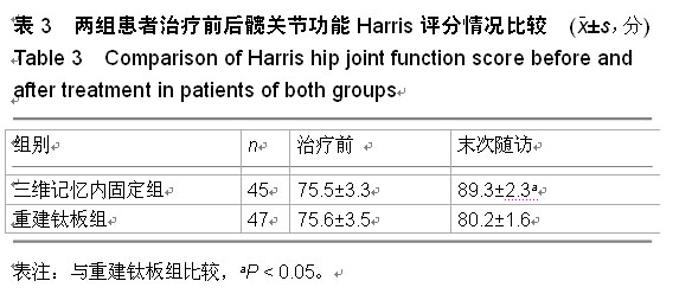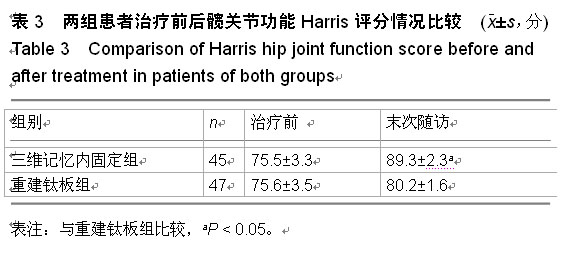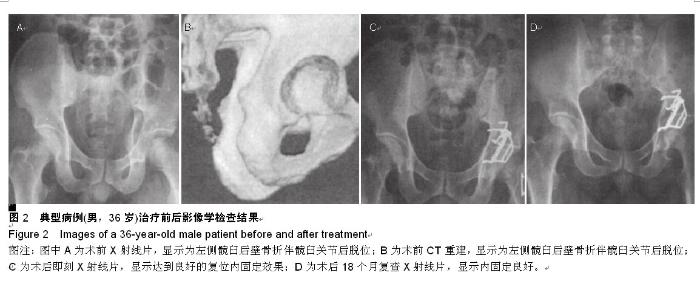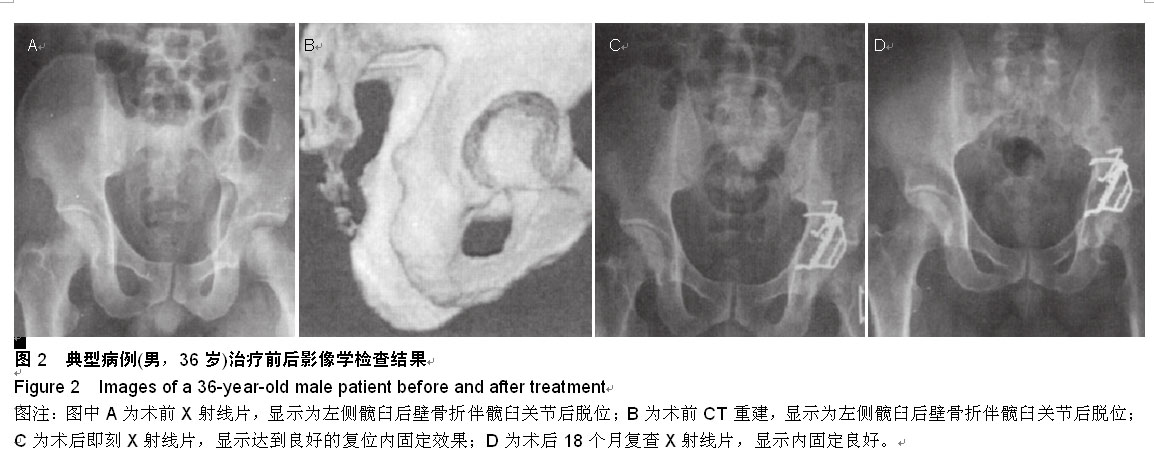| [1] 曹烈虎,王思成,苏佳灿,等.应用镍钛记忆合金内固定系统结合自体游离髂骨解剖重建髋臼后壁骨折缺损[C].第十七届全国中西医结合骨伤科学术研讨会论文集,2009:249-252.
[2] 汪光晔,张春才,许硕贵,等.髋臼三维记忆内固定系统治疗髋臼后壁骨折的有限元分析[J].中国组织工程研究与临床康复,2007, 11(13):2462-2465.
[3] 张春才,许硕贵,禹宝庆,等.应用髋臼三维记忆内固定系统(ATMFS)治疗复杂性髋臼骨折及其临床意义[J].中华创伤骨科杂志,2004,6(4):364-368.
[4] 汪光晔,张春才,许硕贵,等.髋臼记忆内固定系统治疗髋臼横断骨折的三维有限元分析[J].中国骨伤,2007,20(12):830-832.
[5] 杨林,徐海斌,杨素敏,等.记忆合金三维内固定系统在髋臼骨折中的应用[J].新乡医学院学报,2009,26(4):385-387.
[6] 牛云飞,王家林,张春才,等.ATMFS对犬骨盆弓状线部力学性能和胶原合成的影响[J].中国临床解剖学杂志,2008,26(2): 191-195.
[7] 许硕贵,张春才,付青格,等.自体髂骨解剖性重建在复杂髋臼后壁骨折合并股骨头后脱位中的应用[C].第十九届全国中西医结合骨伤科学术研讨会论文集,2012:455-455.
[8] 汪光晔,张春才,禹宝庆,等.四种步态负载下髋臼记忆内固定系统治疗髋臼后壁骨折的三维有限元分析[J].中国骨伤,2007,20(7): 448-451.
[9] 王春玲,王利丽,秦晶,等.髋臼三维记忆内固定系统治疗复杂性髋臼骨折的固定配合及体会[J].护士进修杂志,2011,26(18): 1692-1694.
[10] 牛云飞,王家林,张春才,等.骨盆髋臼三维记忆内固定系统对犬骨盆弓状线部骨折力学性能的影响[J].中国骨伤,2007,20(7): 452-454.
[11] 谢孝兴,安智全,姜朝来,等.不同种类植入物置入内固定治疗髋臼横行骨折的理论及其应用[J].中国组织工程研究与临床康复, 2009, 13(48):9491-9494.
[12] 汤洋,张春才,许硕贵,等.髋臼骨折记忆合金三维内固定系统的设计与临床应用[J].中华骨科杂志,2002,22(12):709-713.
[13] 赵斌,徐海斌.髋臼记忆合金三维内固定系统治疗髋臼后壁骨折[J].实用骨科杂志,2010,16(6):455-457.
[14] 李文锐,李文虎,叶春福,等.髋臼三维记忆内固定系统治疗髋臼骨折[J].实用骨科杂志,2006,12(5):407-409.
[15] 梁军,刘安民.髋臼后柱解剖型记忆固定器治疗骨盆骨折[J].创伤外科杂志,2012,14(4):361-362.
[16] 万岷,张春才,许硕贵,等.记忆合金三维内固定系统治疗髋臼骨折的生物力学研究[J].医用生物力学,2005,20(3):171-175.
[17] 章云童,付青格,许硕贵,等.髋臼记忆合金三维内固定系统治疗涉及臼顶负重关节面的髋臼骨折[J].中华创伤骨科杂志,2011, 13(7): 635-639.
[18] Xin-wei L, Shuo-gui X, Chun-cai Z, et al. Biomechanical study of posterior wall acetabular fracture fixation using acetabular tridimensional memory alloy-fixation system. Clin Biomech. 2010,25(4):312-317.
[19] 潘昌武,刘曦明,蔡贤华,等.AO微型联合重建接骨板内固定治疗髋臼后壁骨折[J].中华骨科杂志,2013,33(11):1097-1103.
[20] 潘昌武,刘曦明,蔡贤华,等.微型联合重建接骨板内固定治疗髋臼后壁骨折坐位下的三维有限元分析[J].中国矫形外科杂志,2015, 23(2):160-164.
[21] 苏佳灿.髋臼三维记忆内固定系统治疗髋臼骨折记忆生物力学研究-骨盆、髋臼三维模型仿真、力学模拟与有限元分析[D].上海:第二军医大学,2004.
[22] 万岷.髋臼三维记忆内固定系统治疗髋臼骨折的相关机理研究[D].上海:第二军医大学,2005.
[23] 温斌.三维记忆内固定系统治疗髋臼骨折的疗效分析[J].中国校医,2009,23(6):638,641.
[24] 张春才,许硕贵,付青格,等.髋臼骨折镍钛记忆合金三维内固定系统的设计与临床应用[C].第十九届全国中西医结合骨伤科学术研讨会论文集,2012:400-400.
[25] 张春才,许硕贵,付青格,等.髋臼粉碎性骨折合并压缩性缺损的治疗与对策[C].第十八届全国中西医结合骨伤科学术研讨会论文集,2011:83-83.
[26] 张明勇,帅克宁,金兴斌,等.髋臼骨折记忆合金三维内固定系统在髋臼骨折中的应用[J].临床骨科杂志,2008,11(2):137-138.
[27] 李铁彬.记忆合金环抱器内固定修复连枷胸:1年随访分析[J].中国组织工程研究,2015,19(4):601-605.
[28] Xin-wei L, Shuo-gui X, Chun-cai Z, et al. Biomechanical study of acetabular tridimensional memoryalloy fixation system. Clin Biomech (Bristol, Avon). 2010;25(4):312-317.
[29] 汪光晔.步态中骨盆髋臼生物力学及髋臼三维记忆内固定系统治疗髋臼骨折的三维有限元分析[D]. 上海:第二军医大学,2007.
[30] 雷剑锋.TiNi形状记忆合金内固定器治疗骨折的临床疗效分析[J].医学美学美容:中旬刊,2014,23(12);281-281.
[31] 赖小刚,王宪东.镍钛记忆合金环抱器治疗多发性肋骨骨折的临床分析[J].临床军医杂志,2015,(1):85-86.
[32] 杨利斌,宗海斌,董玉珍,等.记忆合金在髋臼骨折中的应用[J].中国医药导刊,2010,12(2):207-208.
[33] 查露露,徐恩五.记忆合金环抱器治疗多发肋骨骨折的术后疼痛观察[J].海南医学,2014,25(20):3061-3062.
[34] 牛云飞,许硕贵,张春才,等.ATMFS对犬骨盆弓状线骨折愈合及骨钙蛋白和骨唾液酸蛋白表达的影响[J].中国临床解剖学杂志, 2010,28(5):557-561.
[35] 张义栋,杨睿,姜睿.记忆合金肋骨环抱器和可吸收肋骨钉在治疗多发肋骨骨折中的应用研究[J].中国伤残医学,2014,22(10): 70-71.
[36] 许累欣,张欣,章云童.锁定钢板结合镍钛形态记忆合金弓齿钉治疗锁骨粉碎性骨折[J].实用骨科杂志,2014,20(4):343-345.
[37] 王愉思,王家让,刘宏哲,等.重建钢板联合记忆合金骑缝钉治疗髋臼骨折[J].中华创伤骨科杂志,2007,9(2):105-108.
[38] 傅利勤,陈建芳,陈丽勤,等.应用三维记忆内固定系统治疗复杂性髋臼骨折的护理体会[J].解放军护理杂志,2005,22(6):57-58.
中国组织工程研究杂志出版内容重点:人工关节;骨植入物;脊柱;骨折;内固定;数字化骨科;组织工程
|
